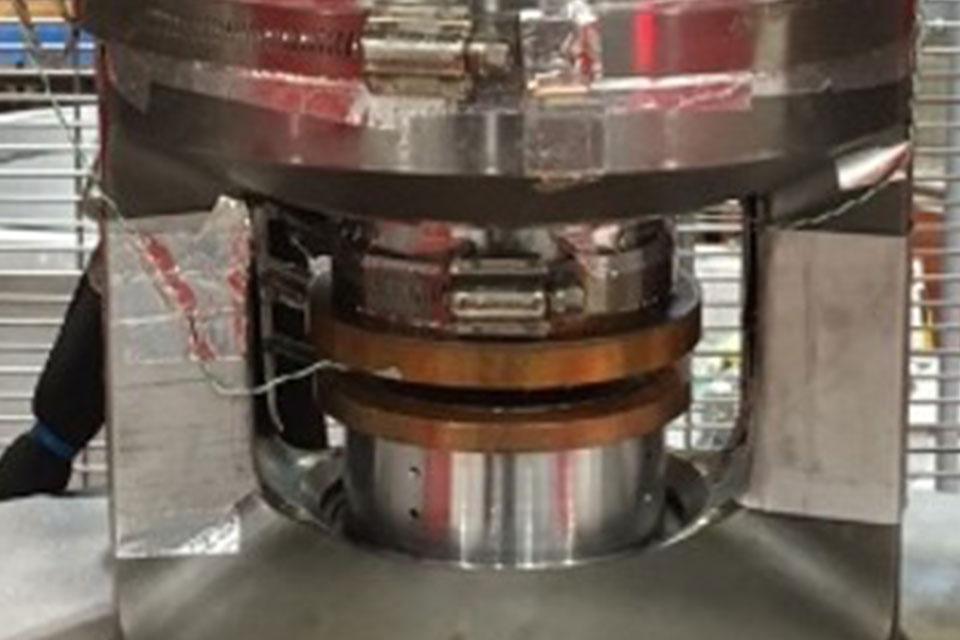An international team of researchers, including Dr D Prabhakaran and Professor Andrew Boothroyd of Oxford’s Department of Physics, has recently discovered that a subtle magnetic and electric hybrid response that is observed in some magnetic insulators can be strongly enhanced by application of pressure. The results help to explain the underlying mechanism, and point to ways in which materials showing the effect can be improved.
According to Maxwell’s equations, in free space a static electric field cannot induce a magnetic field, and a static magnetic field cannot induce an electric field. In condensed matter, however, such a coupling is possible, and materials which possess this property are called magnetoelectrics. The magnetoelectric effect is both interesting and useful, because it makes it possible for magnetism to generate ferroelectricity – in other words, a spontaneous alignment of atomic magnetic moments can induce a voltage across a sample. Moreover, the direction of the induced voltage can be switched by an external electric field. Materials which possess this property are known as multiferroics, and have potential applications as electromagnetic sensors, actuators and in memory devices.
One limitation on the applicability of multiferroic materials is that the multiferroic effect usually occurs only at temperatures that are well below room temperature. This is because the coupling mechanism responsible for the effect is dependent on the symmetry of the magnetic structure, and structures with the requisite magnetic symmetry tend to be fragile and observed only at low temperatures.
The team studied cupric oxide, a simple compound of copper and oxygen, by neutron diffraction at the ISIS Neutron and Muon Source. Pressure was applied to the sample in a Paris-Edinburgh cell with diamond anvils that were specially designed for use on neutron beamlines. At atmospheric pressure, cupric oxide exhibits a multiferroic phase with helical magnetic order over a small temperature range from 213 K to 230 K. Consistent with theoretical predictions, the onset temperature of the multiferroic phase was observed to increase with increasing applied pressure until, at a pressure of 18.5 GPa, the phase becomes stable at room temperature (295 K).
Professor Boothroyd comments: ‘This was an incredibly challenging experiment which failed several times before it finally worked. The result was truly a reward for perseverance. Much credit must go to the pressure expertise of Dr Noriki Terada, Chris Ridley and Craig Bull and to the WISH beamline staff at ISIS, Dr Pascal Manuel, Dr Dmitry Khalyavin and Dr Fabio Orlandi.’
Room temperature type-II multiferroic phase induced by pressure in cupric oxide, by N Terada et al, Phys. Rev. Lett. 129, 217601 (2022)

